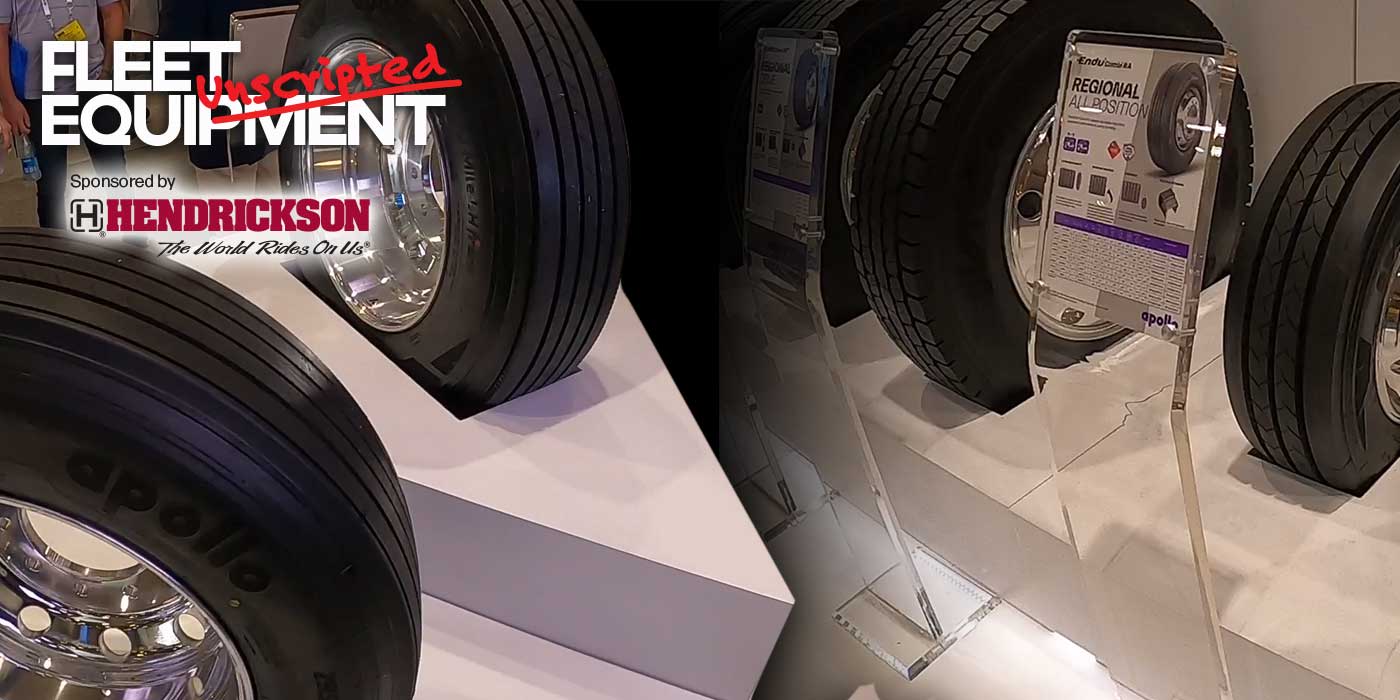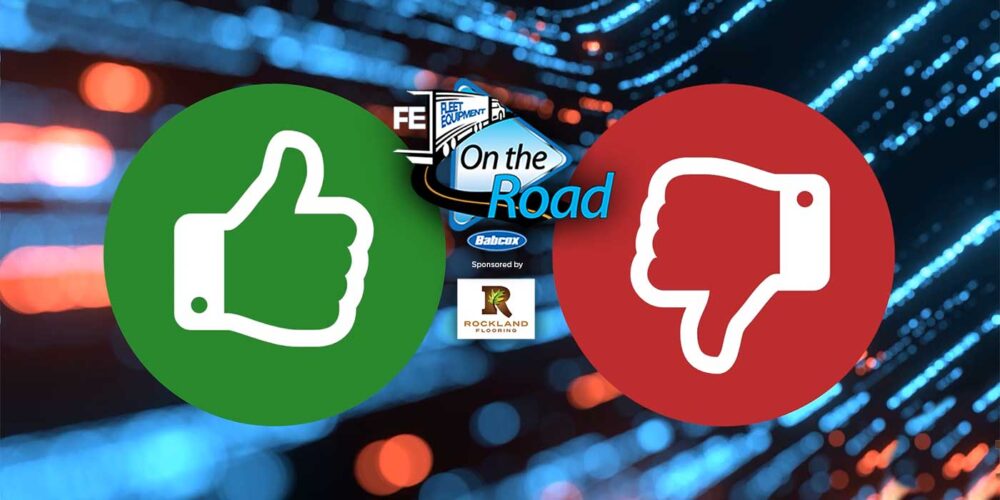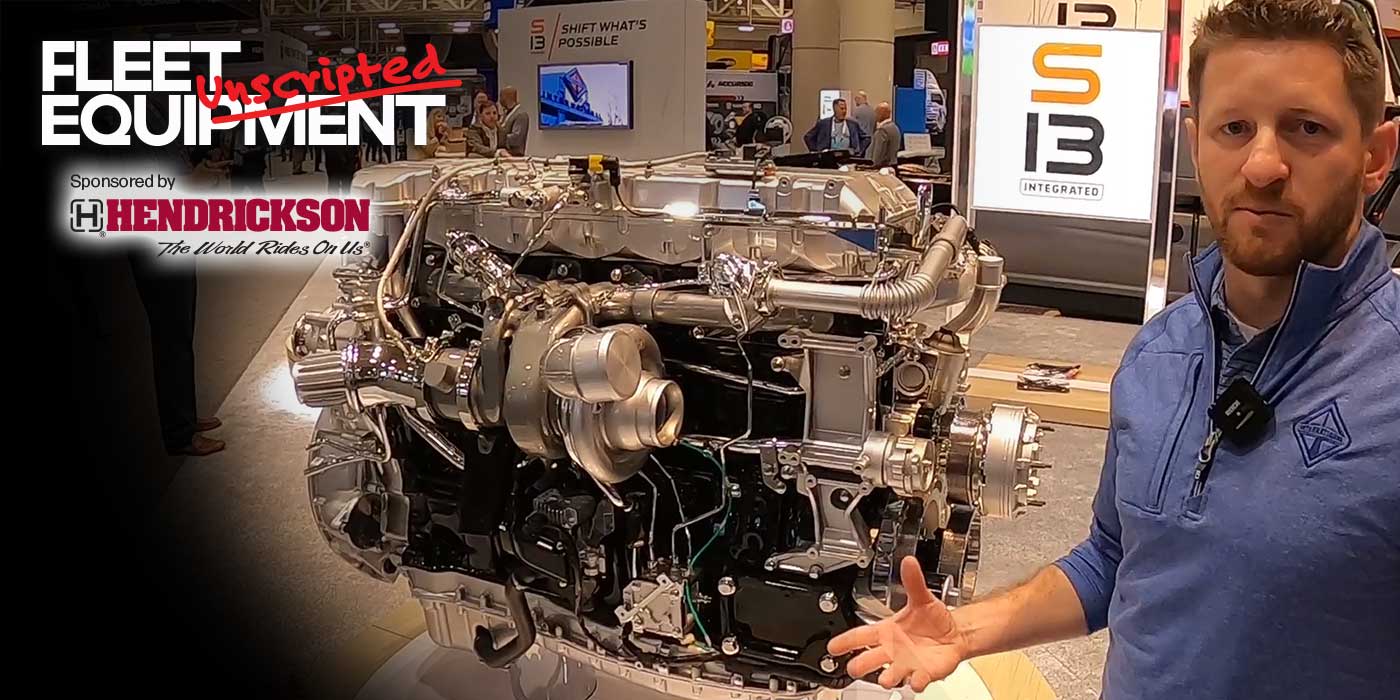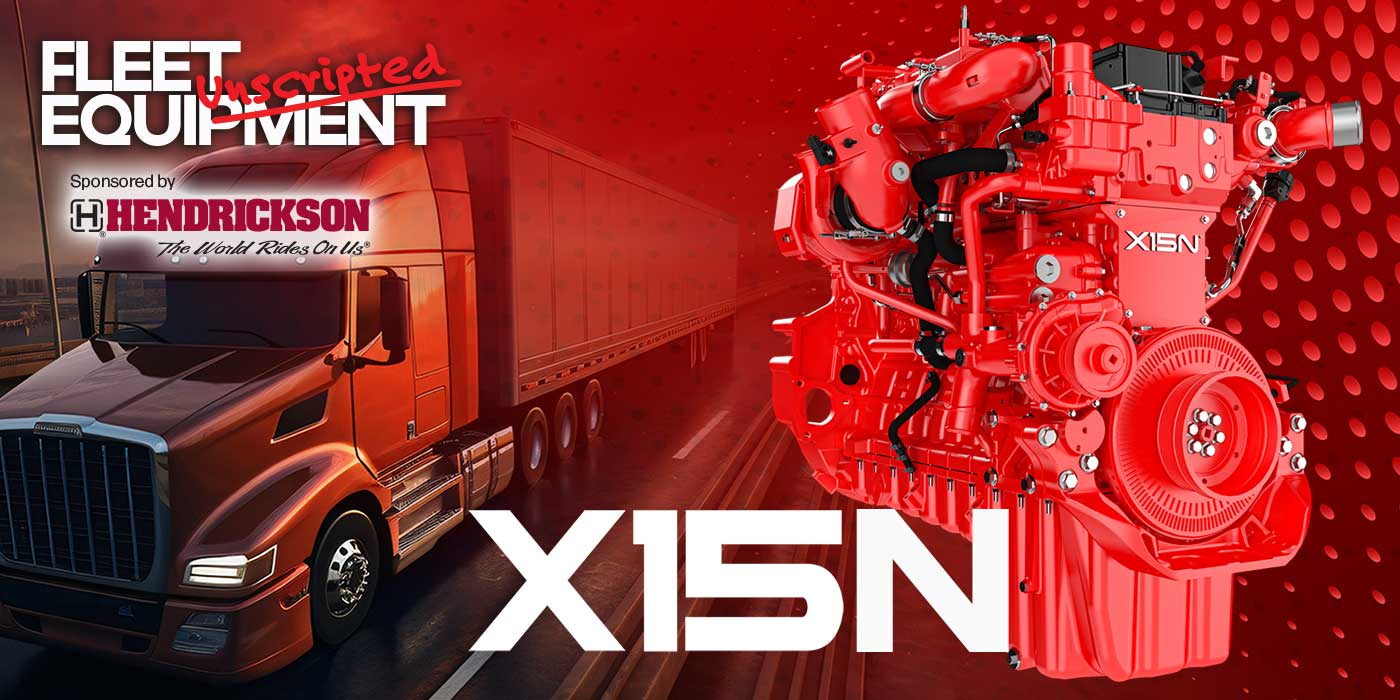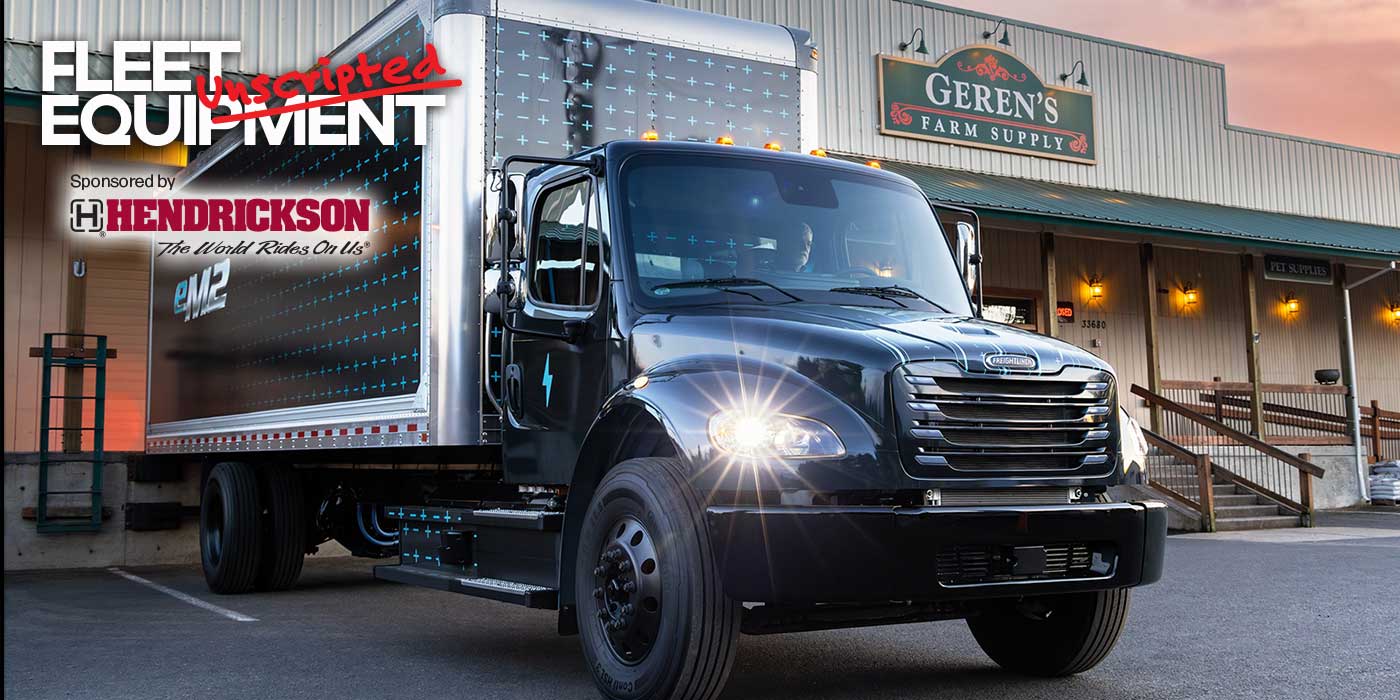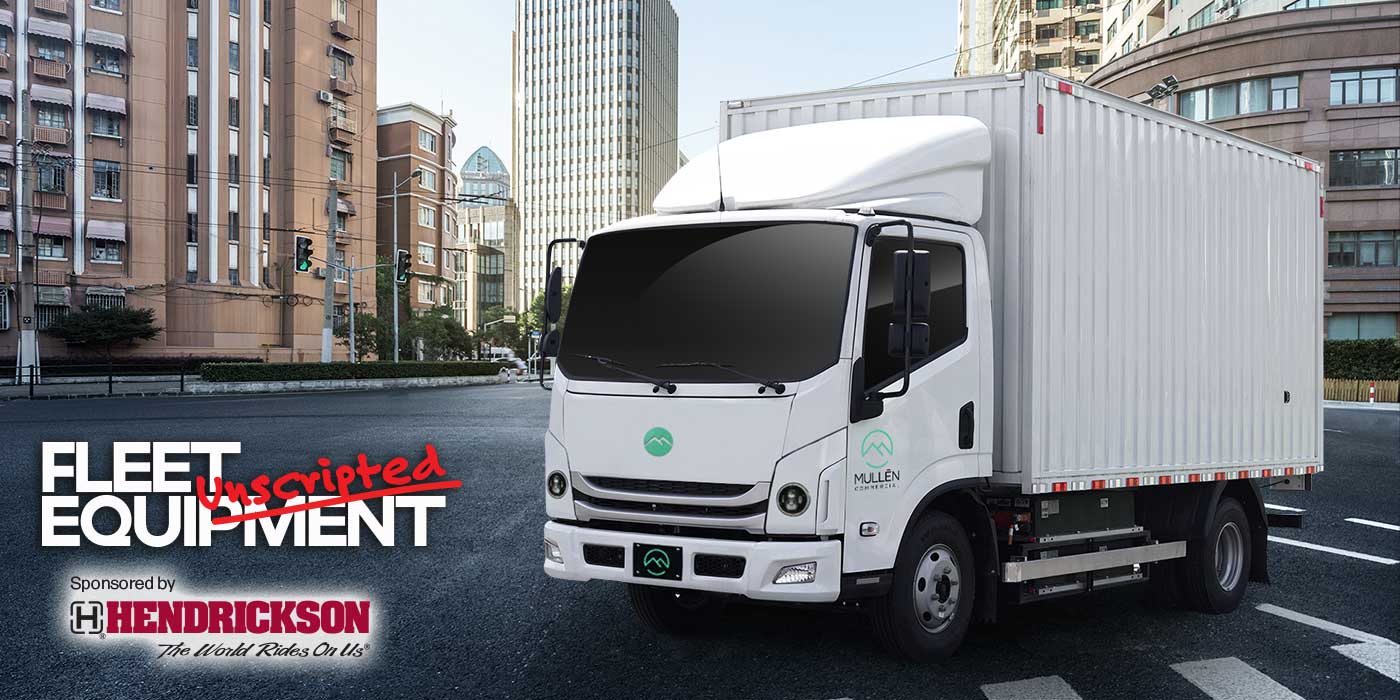The trailer telematics space is evolving to provide nearly countless solutions for fleets. The challenge is that … trailer telematics is starting to provide nearly countless solutions. Where do you start? How do you navigate a complicated technology space where OEM and third-party trailer telematics service providers are integrating with suppliers’ component data. Who is working with whom? What equipment is integrated with what platform?
Let’s start with the most important question: What challenge are you looking to solve with trailer telematics?
With your own answer in mind, watch the video above to listen to the conversation I had with Mike Lavery, senior director of sales and marketing, Sensata Insights. He walks us through the ever-changing telematics landscape and the role Sensata is playing as a data traffic director and the solutions its platform is able to deliver as it takes on its own integrations. Watch the video above for all of his insight.

No script? No plan? No problem. Welcome to Fleet Equipment Unscripted—the video interview series that connects you with the greatest minds in the heavy-duty trucking world.
Bookmark the Fleet Equipment Unscripted page to catch all of our Unscripted episodes, and subscribe to our newsletter by clicking here to have the latest news and in-depth trucking stories delivered straight to your inbox.
Fleet Equipment Unscripted is sponsored by Hendrickson.
Here’s a transcript of the conversation
Jason Morgan:
Hi everyone, I am Jason Morgan content director for Fleet Equipment and welcome to Fleet Equipment Unscripted. Today, we’re talking with Mike Lavery, senior director, sales and marketing, Sensata Insights. Mike, thank you for connecting with us.
Mike Lavery:
Good morning, Jason. Thanks for having me.
Jason Morgan:
So we’re going to talk about trailer telematics today, and I’m excited to connect with you because since Sensata is a name that I am hearing more and more on the telematic side and people integrating with others through your platform and network and your offering there. So I just want to lay a bit of groundwork here. The trailer telematics and technology space is just evolving so rapidly, so, so rapidly. It’s even hard for me to keep up and that’s my job here. Can you give us an idea of… Right now, what are the entry level trailer telematics technology offerings that Fleet should be aware of and what’s Sensata’s role in delivering that information to the fleets?
Mike Lavery:
Yeah, sure. So when you think of entry level trailer telematics, I really think of your basic GPS asset tracking device as the entry level for fleets that want to enable their fleets with additional technology, right? And so mainstream GPS asset tracking devices are cellular enabled. They have the ability to offload information to the cloud, to a fleet’s backend system or some type of portal where they can see real-time updates and alerts and information about their fleets. And it sounds very simple or basic, but they can really enable fleet to improve planning optimization. And I think one of the most important things to consider here as their end customers are now expecting regular updates and regular information about their shipments, right? It’s really becoming an anti for the game now for fleets to have that connectivity, right?
Mike Lavery:
And maybe to dig a little bit deeper, there are a few different flavors of those asset tracking technologies. And at Sensata, we offer both wired as well as solar base asset trackers. And so really depending on the type of fleet and the frequency of updates or information that they want to provide will really dictate which technology that they will select. If you think of a wire tracker, rechargeable battery, wires into the trailer gets recharged when the tractor is connected to recharge the batteries.
Mike Lavery:
When the asset is dormant, those devices will last months up to a year, [inaudible 00:03:03] often you want to transmit information. Compare that to a solar based device that doesn’t have to rely on the tractor, that asset can be dormant for long periods of time but continue to send updates because it’s using solar enter energy harvesting to recharge the batteries. And so you’ll find that solar tractors are typically cost a bit more, but that can be offset by the fact that you don’t have to actually wire the device into the trailer so that it gets power from the tractor.
Jason Morgan:
Right. Right. Right. Well, and it’s interesting you bring that up too because solar is something that I think the whole world is talking about right now, as we talk about more sustainability and energy. But in this use case in trucking, it’s always a question mark, and I always wonder how applicable or in what applications is it really work? We’ve seen some in terms of some battery charge being able to put a little solar panel on the dash to keep battery charge. But this is a real interesting application, really useful, because like you say, you don’t want those trailers, for example, right.
Jason Morgan:
Like you said, they’re sitting, you want to be able to connect with them. I know that one of the companies that you’re working with, we work closely with on the other editorial side is Hendrickson. And they’ve mentioned that they’re using your gateway to connect their wheel end components into the cloud and get that to fleets. Can you tell me a little bit more about the gateway? How does that work? What is your role working with the likes of Hendrickson, and then they’re working with other providers and suppliers and there’s OEMs getting into the game, there’s other third parties getting in the game. Where does Sensata fit in this whole infrastructure of trailer telematics?
Mike Lavery:
Yeah, sure. So we’re really trying to enable across the gamut. You just mentioned whether it’s private fleets, whether it’s tier, whether it’s OEMs and the gateway product is one of those products that we develop that is a wireless gateway that installs under the rear of the trailer. And we had developed it to interface wirelessly with our TPMS sensors that we could gather real time information about the status of those tires, [inaudible 00:05:24] wirelessly to the gateway, and then offload that information to the cloud via a telematics device.
Mike Lavery:
One of the important things about the gateway is on the wire side, it’s leveraging a standard J1939 interface. So that interface with telematics devices to offload that information. I think one of the things that you probably hear quite a bit from fleets, there’s a reluctance sometimes to invest in technology because it’s not standard and there’s no interoperability. And so we wanted to make sure that there was standards being used for that wired interface, and so that’s why we are leveraging 1939.
Mike Lavery:
In the case of Hendrickson, we partnered with them to provide wireless wheel end sensors to monitor temperature and pressure. And so we’re funneling that wheel end sensor data wirelessly into the gateway, and then having the ability to offload that information to the cloud via telematics.
Jason Morgan:
Okay. So because I’m very basic trying to wrap my head around this. So the gateway it’s a hardware kind of traffic cop for the data, right? There’s lots of components getting into the data game at this point, your gateway supports the information flowing off those components on the trailer. And then it sending it, as you say to that telematics device, which would be like the Phillips Connect or Great Dane, just to name a few of them, whatever telematics device.
Jason Morgan:
So yours isn’t sending the information to the cloud, but it’s the gatekeeper, the kind of traffic cop for where that information goes. And to your point, really leveraging the standards that are already in place, which is really, really, I know fleet managers probably appreciate that too so that we’re not developing new standards. And that’s what’s getting the information to the device that’s sending it out into the space.
Mike Lavery:
Absolutely. You got it.
Jason Morgan:
Okay. Very cool. So you mentioned a couple of the things you’re working on here. You mentioned the wheel end, temperature sensor with Hendrickson, you mentioned your own TPMS device. What else do you see this enabling and how do you see the market shaking out in terms of how fleet managers can bring these solutions together? You’re a great example of someone that’s working with a lot of people where there are currently different sectors in the trailer telematic space that are popping up. What advice do you give for fleet managers for how they can talk about their needs and making sure that they can get the information they need from any of the providers they’re working for or working with?
Mike Lavery:
Are you saying as far as getting into the trailer telematics?
Jason Morgan:
Yeah. As far as just navigating the landscape right now, which there’s the third party providers, there’s the OEM providers, there’s the component people that are getting in the game. And then you have your component part as well as kind of that gateway middle part there that directs that data. How do you recommend working with everybody to get the data that I need as a fleet manager?
Mike Lavery:
Yeah. That’s a really good point because you see a lot of folks coming to market and the OEMs are getting into the game as well too. And one of the things that I think folks should be aware of is most fleets are operating mixed fleets and they need to be conscious of investing in different devices or solutions from different players. Because now, instead of having one consolidated pane of glass to manage the fleet, they may be in a situation where they need multiple panes of glass. And for any fleet operator that is going to be painful and challenging. And so as they’re evaluating the landscape of devices and technologies, I think they need to be thinking about the type of fleets that they’re operating and what product or solution makes the most sense for them long-term.
Jason Morgan:
Right. Right. And it’s funny, I had a conversation yesterday a lot about what’s going on with the 3G Sunset, and clearly in some cases that sunset is gone, but the trailer come out. We talked a lot about tractors, but the trailer component popped up too. And even the idea that you still want visibility in all those assets, you want to be able to share that information and whether it’s being able to swap out to newer hardware, or to your point on the solar component earlier, not having to swap out as much or keep straight which solution I have on which trailer and which company I need to get ahold of to go switch that. To your point, planning right now and having a long-term strategy is probably a really great view if they’re getting into this game.
Mike Lavery:
Yeah. That’s a good point on the solar side. One of the great things about our solar device is that we offer it with a dual SIM card option. And so fleets that are actually deploying our solar device with two separate SIM cards, and so they’re able to switch on the fly between carriers that may have a coverage problem or they may be negotiating in real-time between carriers for better pricing. And it gives them the flexibility to switch between carriers without having to replace hardware.
Jason Morgan:
Oh, right. Okay. Because that makes a lot of sense, especially when new… LTI know is supposedly long-term evolution here, but we’ll see as you keep doing really cool things, we’re going to need more value. The ability to swap out the sims would be a lot easier than swapping out that hardware for sure. I know that’s a huge thing for fleets right now.
Mike Lavery:
Yeah. We’re going through the 3G Sunset now, folks are asking us quite a bit about longevity of 4G and things like that. And the carriers are saying that it’s going to be around for the foreseeable future, right? They don’t want to commit. Announcing any end of life at this point but we’re seeing customers ask us about 5G quite a bit as well. And really for these IoT type applications, it’s really overkill. And the LTE-M networks are really optimized for these types of use cases; low bandwidth, low data rates. I really see 4G being around for the, at least the next eight to 10 years in my opinion.
Jason Morgan:
Right, right. No, that’s very cool. I know I’m jumping around a little bit here, but I did want to go back to one last thing that you said in terms of solutions that you’re bringing to the market. What’s the future look like? So fleets that are getting into this right now, what kind of functionality or applications do you see coming down the line that maybe might come to the top of mind when you’re thinking about trailer telematics right now?
Mike Lavery:
I would say the one trend that we’re seeing quite a bit of is cargo monitoring. And we’ve got solutions around cargo monitoring and there are very basic solutions out out there that just do presence detection. Is there something in the trailer or not? A bit more advanced technologies that can take pictures of the contents of the trailer or do volumetric calculations on the edge, which is what our device does. we have an IoT gateway that installs in a trailer, and it will leverage stereo vision cameras to measure how full that trailer is.
Mike Lavery:
And we also have the ability to offload the actual picture of the contents of that trailer. And it’s very powerful because it works in all lighting conditions. So not only could we take a measurement on the dock as the trailer’s being loaded, we can also take measurements of pictures while the trailer is rolling down the road. So we can look at things like load shift or maybe where the damage occur. And then if you combine that with the GPS and a door sensor, now you can start to look at, “Hey, is the door being externally opened along a trip, right?”
Jason Morgan:
Right.
Mike Lavery:
So by the way, we can, now when that door is triggered, we can take a picture. So who’s actually in the trailer when the door is open on a route or in a yard or at a customer location. So we’re really getting a ton of interest in cargo monitoring for a lot of these reasons; load optimization, load quality, safety and security, and it’s really starting to be a hot topic.
Jason Morgan:
And very cool. I’m sprinting to keep up with you. I have two quick clarification involved. So was the word stereoscopic imaging stereo?
Mike Lavery:
Stereo vision. So two-
Jason Morgan:
Stereo vision, right. So is that creating more of a 3D type image of the load in the trailer or what is that?
Mike Lavery:
Well, it’s like how your eyes work. So the two cameras are used to get that depth perception. So we can measure the depth and we can measure is there a one pallet in the trailer, we can measure is there a wall of individual parcels in the trailer? So we’re really using the stereo vision to get that depth perception.
Jason Morgan:
Right. Okay.
Mike Lavery:
Find it with an ultrasonic sensor to actually improve the calculations. And one of the things that’s important with our solution, it’s all done on the edge. The calculations are done in the trailer. We’re not offloading all of that information to the cloud. For processing, it’s done locally.
Jason Morgan:
Okay. So that was my other follow up question, because I’m hearing this term more and more now the edge, like what is the, it sounds very cool. I will say that like. It’s very cool, so that’s doing the data crunching on the device. You’re not sending to the cloud and then waiting for that to come back to somewhere, right? You’re doing it at the location.
Mike Lavery:
Absolutely. And when we just spoke about cellular, one of the things that does is reduce the amount of cellular overhead going back and forth because the processing is happening locally.
Jason Morgan:
Right. Right. That’s very cool. Yeah. Very cool. I could probably talk to you for another 15 hours on all this because this is, like we’ve already opened up all the Pandora’s box here, but I think there’s a lot of great information to start with. Mike, I appreciate you taking the time to connect. I’m sure I will be calling you again soon to go over more really cool functionality.
Mike Lavery:
Absolutely. Anytime, Jason. No problem.




